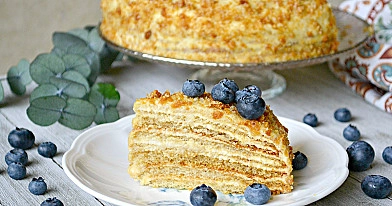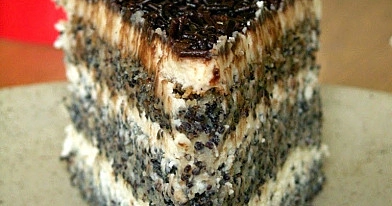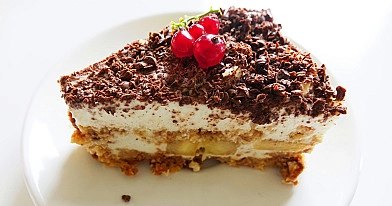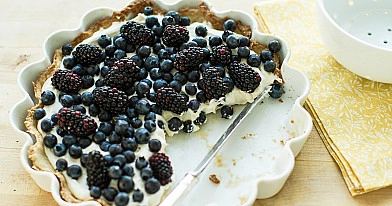
Healthy vegan banana and blueberry bread
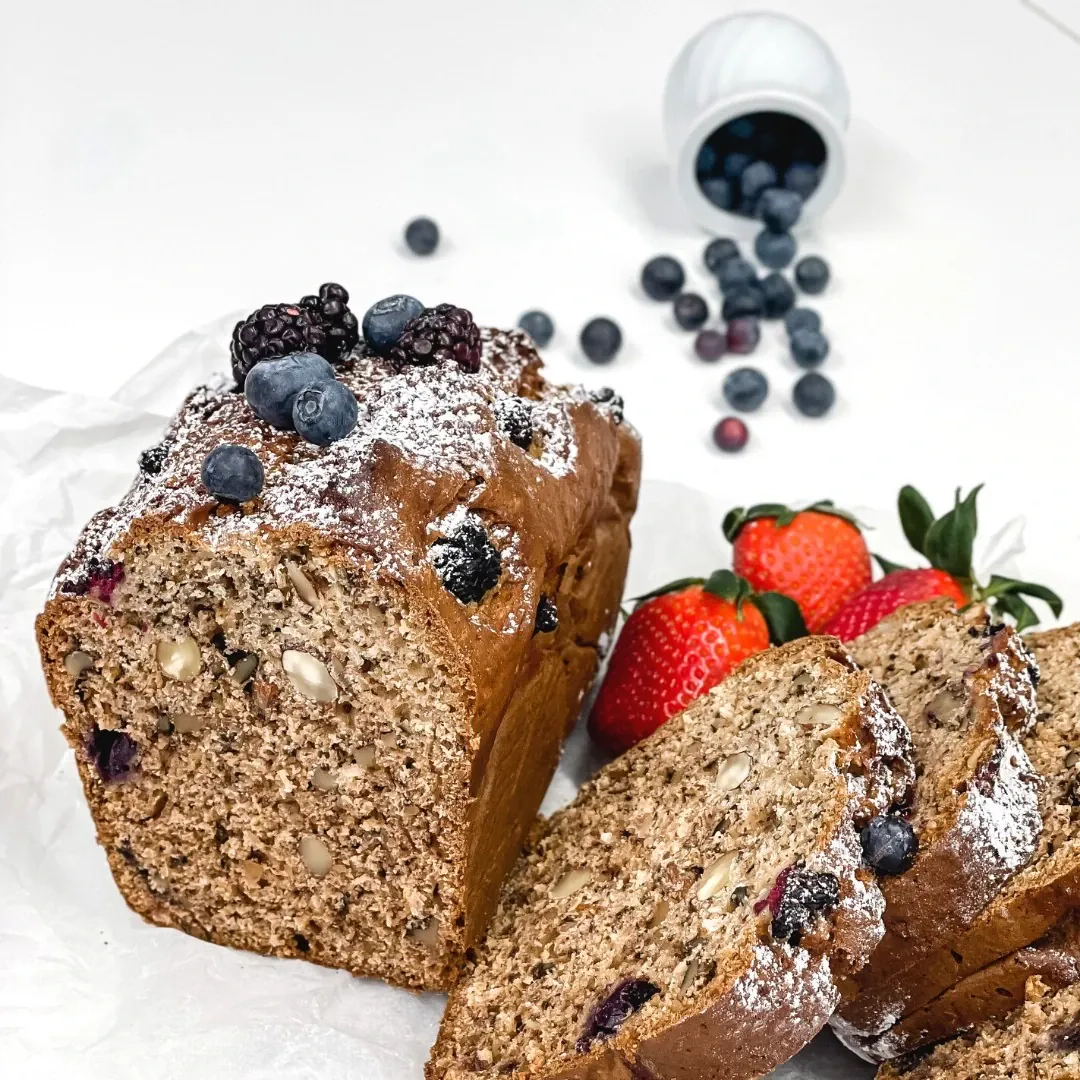
Banana bread has long been a beloved comfort food, known for its naturally sweet flavor and satisfying texture. Adding blueberries to the mix elevates the classic recipe with a burst of freshness and subtle tartness, creating a healthier yet indulgent loaf that is perfect for breakfast, brunch, or even as a wholesome dessert. This healthy vegan banana and blueberry bread recipe combines ripe bananas, juicy blueberries, and plant-based ingredients to make a moist, soft, and flavorful bread without the need for dairy or eggs.
When I first tested this bread, I wanted something both comforting and nutritious, so I replaced the traditional butter and eggs with simple vegan alternatives. The result surprised my whole family—no one could tell it was vegan, and the combination of bananas and blueberries was so delicious that the loaf disappeared within a day. Over the years, this has become one of my most trusted recipes, passed around family gatherings and improved with every bake. It is a bread that feels both homely and bakery-worthy, and it has been thoroughly tested in my kitchen to guarantee success.
Advertisement
Possible ingredient alternatives
- Ripe bananas: Substitute with unsweetened applesauce or mashed pumpkin for a different flavor and lower sweetness level.
- Fresh blueberries: Use frozen blueberries, but add them directly from the freezer to avoid excess moisture.
- All-purpose flour: Whole wheat flour or spelt flour can be used for more fiber and a nuttier taste.
- Plant-based milk: Almond milk, soy milk, or oat milk all work well.
- Coconut oil: Olive oil or avocado oil can be used for a different healthy fat profile.
- Maple syrup: Agave syrup, honey (if not strictly vegan), or date syrup are suitable alternatives.
Cooking tips for the perfect bread
- Always use very ripe bananas with brown spots, as they are naturally sweeter and mash more easily.
- Lightly coat blueberries with a teaspoon of flour before folding them into the batter to prevent them from sinking.
- Do not overmix the batter; gentle folding helps the bread remain light and airy.
- Allow the bread to cool completely before slicing, as this helps it firm up and makes cutting cleaner.
- Store the loaf in an airtight container at room temperature for up to three days, or freeze slices individually for longer storage.
Chef’s advice
For best results, bake this bread in a light-colored loaf pan. Dark pans tend to absorb more heat and can cause the edges to brown too quickly before the center is fully cooked. If you are using frozen blueberries, keep them unthawed and gently fold them into the batter straight from the freezer to prevent streaking and excessive moisture. A sprinkle of rolled oats or chopped nuts on top before baking adds a lovely texture and makes the bread visually appealing.
Ingredients
- Ripe bananas: 3 medium (about 1 ½ cups mashed).
- Fresh blueberries: 1 cup (150 g).
- All-purpose flour: 2 cups (250 g).
- Baking powder: 2 teaspoons.
- Baking soda: ½ teaspoon.
- Salt: ¼ teaspoon.
- Ground cinnamon: 1 teaspoon.
- Plant-based milk (almond, soy, or oat): ½ cup (120 ml).
- Coconut oil (melted): ⅓ cup (80 ml).
- Maple syrup: ½ cup (120 ml).
- Vanilla extract: 1 teaspoon.
- 1. The oven is preheated to 350°F (175°C), and a 9x5 inch loaf pan is lined with parchment paper for easy removal.
- 2. Bananas are peeled and mashed in a large mixing bowl until smooth and creamy.
- 3. Coconut oil, maple syrup, plant-based milk, and vanilla extract are stirred into the mashed bananas until fully combined.
- 4. In a separate bowl, flour, baking powder, baking soda, salt, and ground cinnamon are whisked together to ensure even distribution.
- 5. The dry ingredients are gradually folded into the wet mixture, being careful not to overmix the batter.
- 6. Blueberries are gently tossed with a teaspoon of flour and then folded into the batter with slow, gentle movements.
- 7. The prepared batter is poured into the loaf pan and spread evenly with a spatula.
- 8. The bread is baked in the preheated oven for about 50–55 minutes, or until a toothpick inserted into the center comes out clean.
- 9. Once baked, the loaf is removed from the oven and left to cool in the pan for 10 minutes before being transferred onto a wire rack.
- 10. The bread is cooled completely before slicing into even pieces and serving.
- 11. ✅ This recipe provides not only a wholesome vegan option but also an adaptable method that can be tailored to different tastes and dietary needs. Tested, family-approved, and professionally crafted, this healthy vegan banana and blueberry bread is the kind of recipe you will return to time and again.
Recipe Directions
FAQ
How can I make this banana and blueberry bread gluten-free?
To make this recipe gluten-free, you can replace the all-purpose flour with a certified gluten-free flour blend that includes xanthan gum. From my tested experience, blends with rice flour, potato starch, and tapioca starch provide the closest texture to traditional banana bread. Without a binding agent like xanthan gum, the loaf may crumble, so it is important to use a professionally developed blend. Gluten-free versions may bake a little faster, so keep an eye on the bread and test with a toothpick 5 minutes earlier than the original baking time.
Can this vegan banana and blueberry bread be frozen successfully?
Yes, this bread freezes very well. From my own baking routine, I recommend cooling the loaf completely, slicing it into portions, and wrapping each slice tightly in parchment paper before placing it in a freezer-safe container. This prevents freezer burn and keeps the bread moist. Properly stored, it will remain fresh for up to 3 months. To enjoy, thaw slices at room temperature or reheat gently in a toaster or oven for a freshly baked texture.
How do I prevent the bread from becoming too dense?
A common mistake is overmixing the batter once the dry and wet ingredients are combined. Overmixing develops excess gluten, even in vegan baking, and leads to a dense loaf. My advice is to fold the batter gently until just combined, leaving a few small streaks of flour if necessary. Also, ensure your baking powder and baking soda are fresh, as expired leavening agents can cause the bread to rise poorly. Using very ripe bananas also improves texture, as their higher sugar content softens the crumb naturally.
What is the best way to store vegan banana and blueberry bread?
The best storage method depends on how quickly you plan to eat the loaf. At room temperature, keep it in an airtight container or wrap it tightly in foil for up to 3 days. For longer freshness, refrigerate the bread for up to 1 week, though refrigeration may slightly firm the texture. In my kitchen, I prefer to slice the bread and store it in the freezer, so I can take out individual portions when needed. This preserves the flavor and softness much better than refrigeration alone.
How should I reheat banana blueberry bread without drying it out?
Reheating can dry the bread if not done carefully. The best method is to wrap a slice in foil and warm it in a 300°F (150°C) oven for about 10 minutes. This gentle heat keeps the moisture locked in. If you prefer the microwave, cover the slice with a slightly damp paper towel and heat for 15–20 seconds. I often add a thin spread of vegan butter or nut butter after reheating to restore extra softness and flavor. These techniques have been tested repeatedly in my kitchen and always keep the bread moist.
What mistakes should I avoid when baking this bread?
The most common mistakes are using underripe bananas, overmixing the batter, or cutting the bread before it has cooled. Underripe bananas do not provide enough natural sweetness or moisture, resulting in a bland and dry loaf. Overmixing leads to dense bread with a heavy crumb. Cutting too soon allows steam to escape, which dries the bread and makes slicing messy. Through testing, I have learned that patience in cooling is just as important as proper mixing for achieving a perfect loaf.



